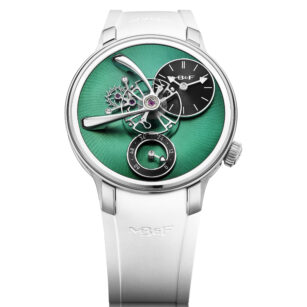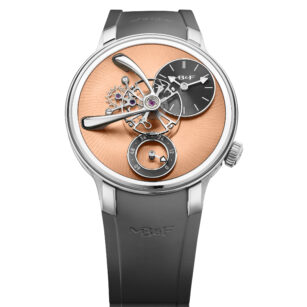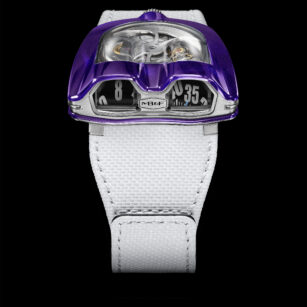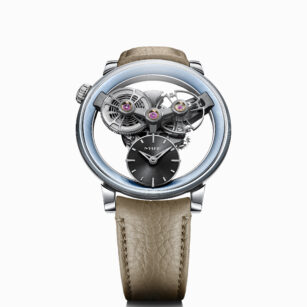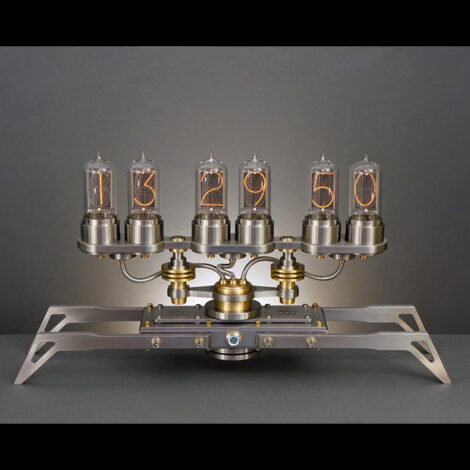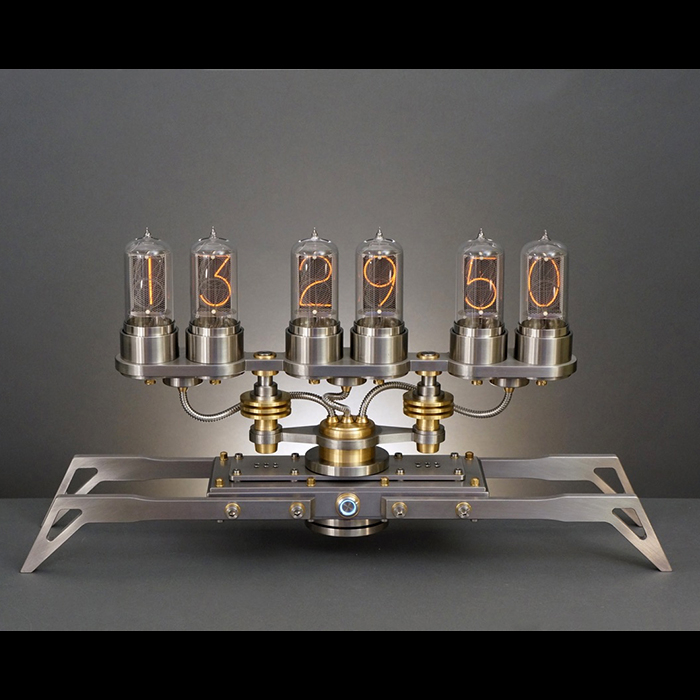
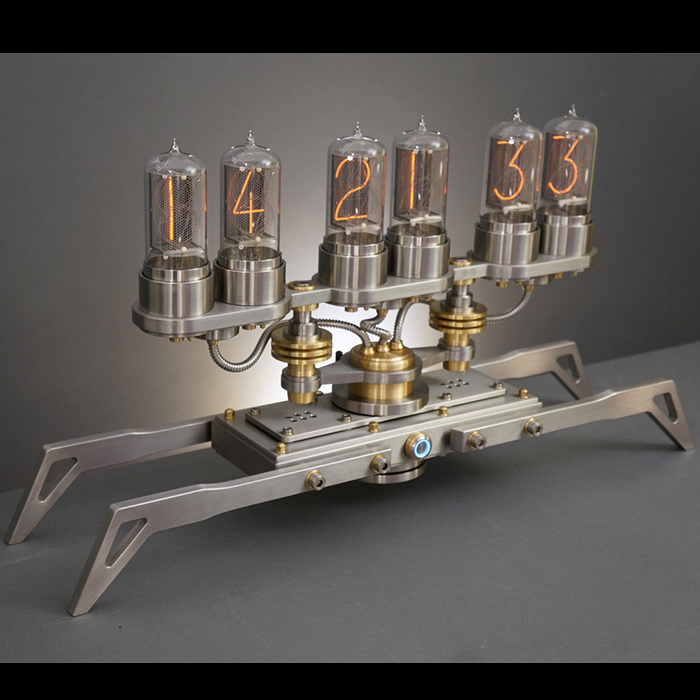
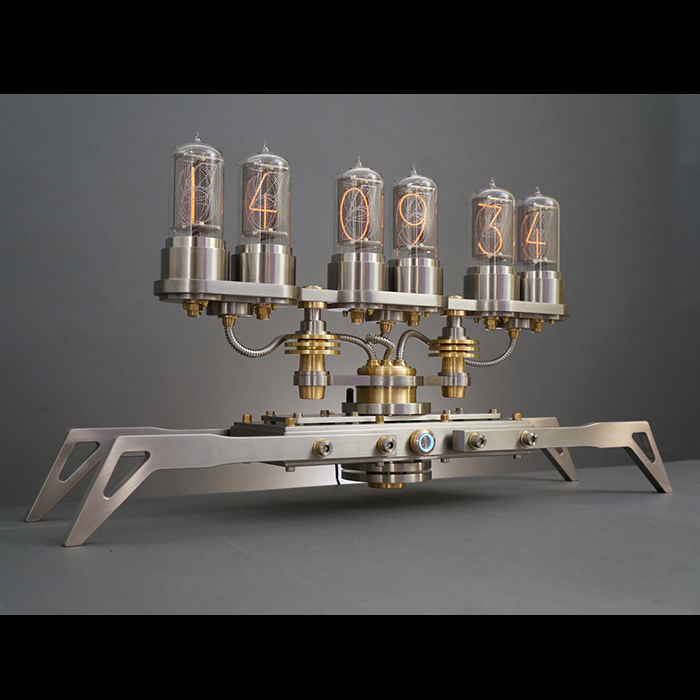
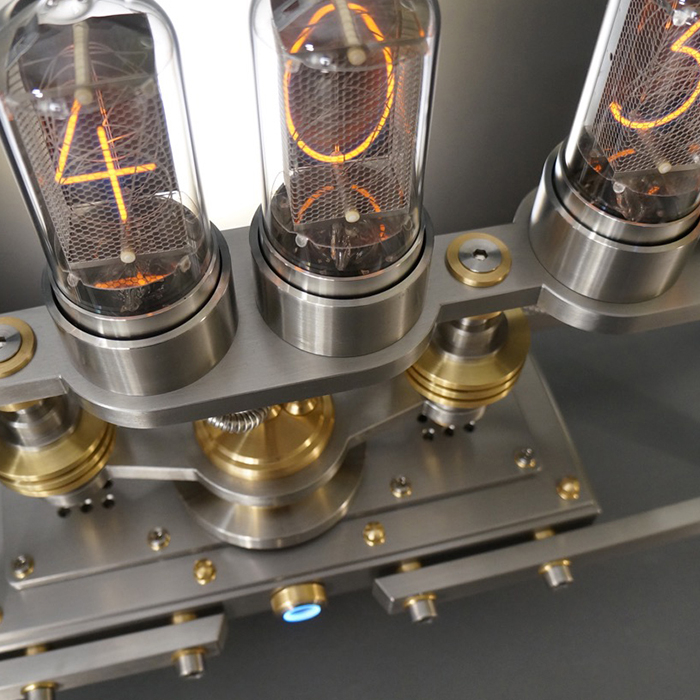
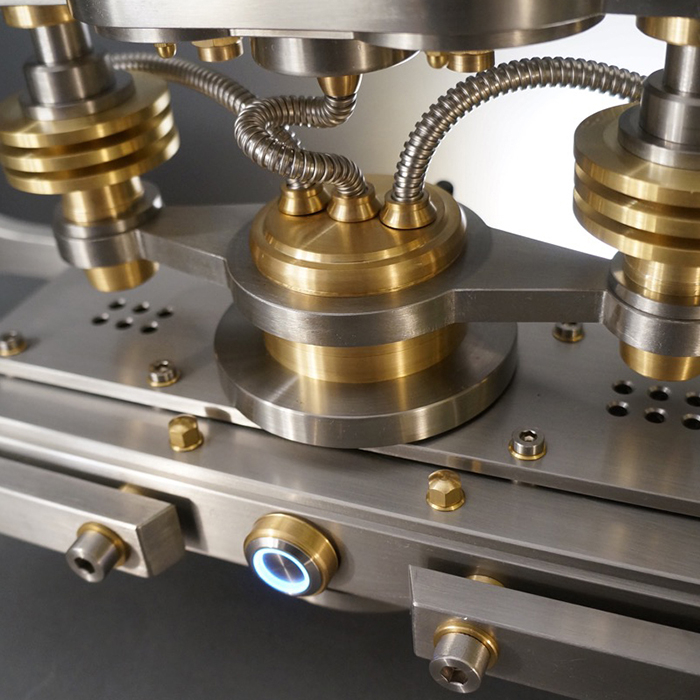
time machine frank buchwald
Based in Berlin, Frank Buchwald was born in Hannover, Germany in 1956. After studying design at the Berlin University of the Arts, Frank worked as a freelance artist and science fiction illustrator until 1993, when he turned his attention to the design and manufacture of metal furniture.
He created all kinds of metal furniture, then gradually turned to making lamps, but it took him many years before he felt that the design of his sculptural lamps was satisfactory.
The Buchwald studio, where he meticulously creates timeless objects, is located in Berlin in a vintage industrial building with bricks, large windows, dark staircases, old electrical switches and visible scars from World War II. The entrance is littered with steel bars and metal plates. In the heart of his studio, the walls are lined with detailed sketches and work tables covered with lathes, welding machines and hand tools – everything the artist needs to imprint his characteristic eye on raw materials.
Büsser had the chance to see Buchwald at work. “It was a fascinating experience,” says the MB&F founder. “Frank is incredible, as is his work. “Frank is incredible, as is his workshop – it’s filled with bars and blocks of metal. He designs, machines, assembles and finishes everything himself. It’s really a way of life for him.”
“Frank Buchwald’s machine lamps are typical of the mechanical-artistic excellence that is the cornerstone of M.A.D.Gallery,” adds Büsser. “Frank creates light-giving machines, where his craft transcends a practical purpose and his creations do indeed take on the status of works of art.”
Buchwald’s soul embodies each work: his dedication is apparent in the artistic fabrications expressed in every minute detail of their unique creativity.
L LAB MB&F DE PARIS Gallery is thrilled to offer this evolution of the original Nixie Machine in a collection of 15 unique pieces available exclusively at LAB Paris and Singapore.
Frank Buchwald’s impressively detailed works were part of the initial list of artists featured at the opening of the first M.A.D. Gallery in Geneva. Buchwald’s intrepid Machine Lights, followed by the first Nixie Machine, were admired from the start by MB&F founder Maximilian Büsser, which led to Buchwald’s work being permanently exhibited at the M.A.D. Galleries.
Introduced in the 1950s, Nixie tubes – also known as cold cathode displays – became a popular way to present numbers via glow discharge. The name Nixie is said to derive from Burroughs Corporation’s “NIX I”, which in turn stood for “Numeric Indicator eXperimental No.1”.
Each glass tube is filled with a low-pressure neon-based gas and includes a wire mesh anode and superimposed number-shaped cathodes; a separate cathode is required for each digit from 0 to 9. A distinctive orange glow discharge surrounds each cathode when energized. Assembled into multi-digit arrays by connecting electronic circuits to multiple tubes, Nixie tubes were often used for computers, clocks, and frequency counters, although they were eventually supplanted by more practical and less expensive – but arguably less charming – displays such as light-emitting diodes (LEDs).
Drawing on the first and second editions of the Nixie Machine series, the Time Machine consolidates Frank Buchwald’s design and structural principles into a futuristic work of art whose dynamic emphasis is dominated by the machine-like nature of the design: the form is compact and vigorous and the proportions perfectly executed.
At first glance, the succession of six Nixie tubes seems to hover above the substructure, instinctively drawing the eye to the digital information floating inside each glass bulb. Closer examination reveals, piece by piece, the intrinsic principles that make up the structure of the machine: a double support riveted by massive steel bolts, steel and brass disks on the solid base construction, and a central cylindrical tower. The additional structural support, extending from the double support, holds the row of tubes like arms, which “transmit” time to the viewer.
Flexible metal tubing feeds power and information to the Nixie tubes from the electronic heart of the machine, which also houses the main central switch, lit as a preternatural bluish “eye.” The special design of this edition of the NM3 required the development of a new circuit board with circuit components and 66 contact pins compressed into a small round area matching the size of the machine’s central body. This innovation was no small feat for Dalibor Farny, creator and engineer of the reused Nixie tubes and collaborator with Frank Buchwald on the Nixie Machines 2 and 3.
The Time Machine is made of solid stainless steel. For design reasons, all components have been exclusively sanded and polished by hand.
The electronic heart of the Time Machine III takes an unprecedented approach to time reading: at the heart of the machine is a powerful wi-fi enabled electronic system, allowing connectivity to the internet and guaranteeing both incessant time accuracy and emancipation from any manual setting.
All settings and special functions (including scroll effects, day/night mode, digital light dimming, time zone settings and more) can be set online, making a user manual unnecessary. The clock itself, however, is self-contained: it can work both online and offline.
The Time Machine is a limited edition of 15 clocks exclusive to MB&F M.A.D. Galleries & MB&F LABs.
63 x 34 cm
17 KILOS
ELECTRIC ALIMENTATION
Delivery time: 4 months

